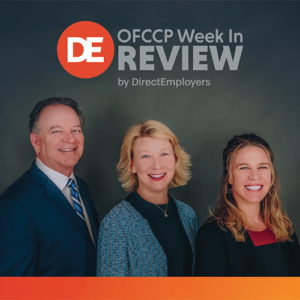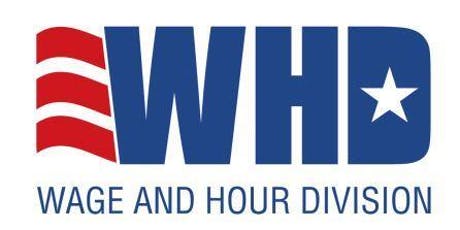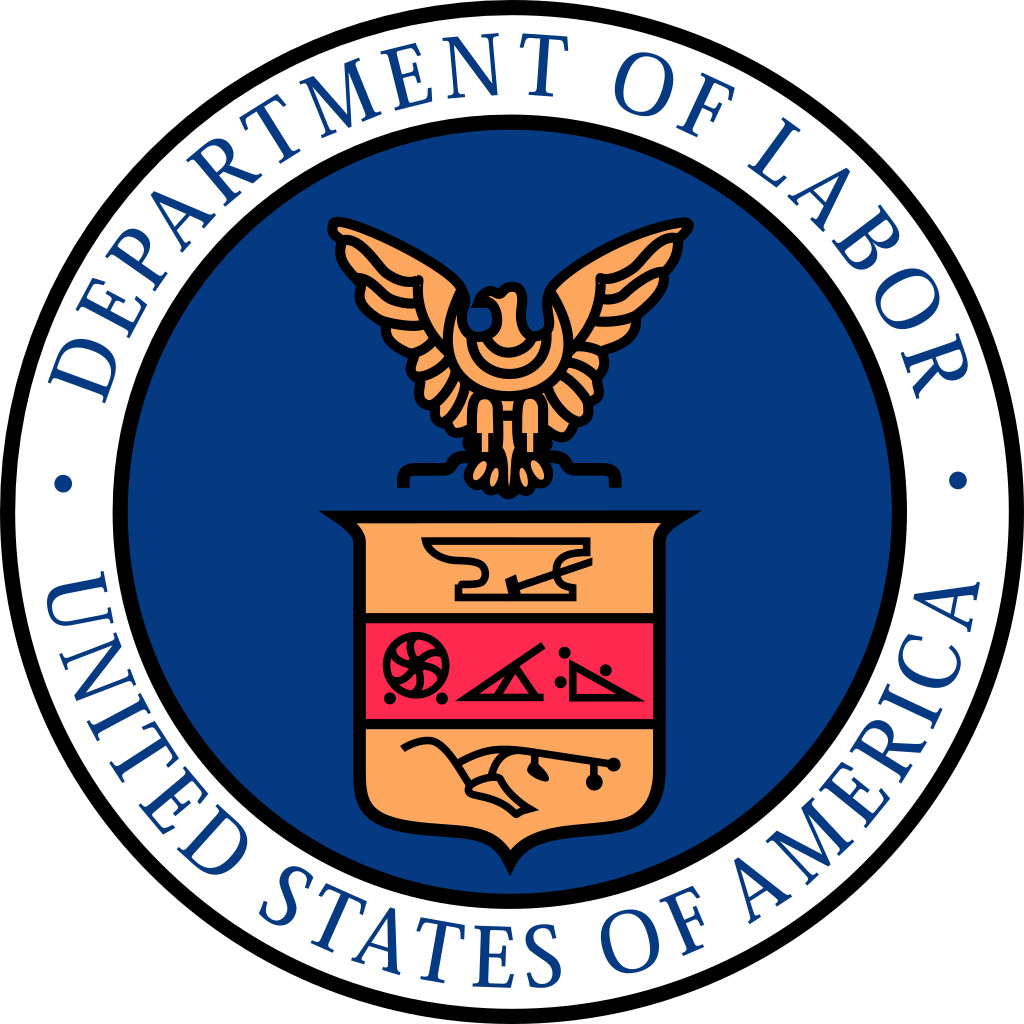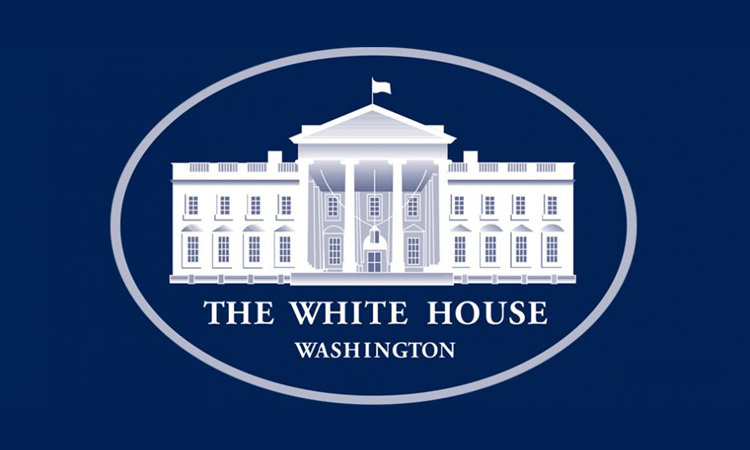
- OFCCP Says Good-Bye to Ten Billion Dollars in Annual TRICARE Contracts
- WHD Published Four New Opinion Letters
- New Minimum Wage for Federal Government Contractors
- Comment Now on Required Apprenticeship Reports
- Higher Education Discussion of Coming OFCCP Focused Reviews Sheds Light on Coming Promotion Issues All Contractors Will Have to Face and Resolve
- USDOL to Trumpet its Assistance and Award Programs
- Trump EEOC Pulls Back Obama EEOC’s Claimed ‘Section 707’ Authority
- July Was a Blockbuster Hiring Month, But Individuals with Disabilities and Minority Hires Continued to Lag
- White House Orders All Federal Agencies to Review Their Race Training Programs and Stop Any Course Which Furthers Racism
Monday, August 31, 2020: OFCCP Says Good-Bye to Ten Billion Dollars in Annual TRICARE Contracts

“OFCCP has determined that special circumstances in the national interest justify granting the exemption as it would improve uniformed service members’ and veterans’ access to medical care, more efficiently allocate OFCCP’s limited resources for enforcement activities, and provide greater uniformity, certainty, and notice for health care providers participating in TRICARE.”
See our previous WIR for the full breakdown of the Final Rule. Finally, OFCCP also discussed which federal health care contracts beyond TRICARE for medical services and supplies continue as “covered Government contracts” and thus continue to provide OFCCP with jurisdiction over certain federal healthcare providers, one of which is still subject to a temporary exemption from audit.
OFCCP Director Leen informed Webinar attendees, for example, that contractors may still have equal employment opportunity (EEO) obligations if they hold other covered federal Government contracts and/or subcontracts and/or are subject to other federal, state, and/or local EEO laws. In addition, Director Leen reminded attendees that DIR 2018-02 (TRICARE Subcontractor Enforcement Activities Directive – see our previous WIR for the full breakdown on this Directive), continues to impose a moratorium on OFCCP enforcement of affirmative action obligations otherwise required of TRICARE subcontractors, including Veterans Affairs Health Benefits (VAHB) subcontract providers. That OFCCP moratorium remains in effect until May 7, 2021, unless earlier revoked. [Remember, too, that an OFCCP audit scheduled in June 2021 could reach back two years prior to the OFCCP audit Scheduling Letter to examine employment transactions as far back as June 2019]. Moreover, OFCCP continues to assert jurisdiction over and may audit Federal Employees Health Benefits Program (FEHBP) providers. However, OFCCP plans to issue sub-regulatory guidance to address concerns regarding FEHBP providers, but has not yet explained whether that guidance will contain any regulatory relief for those contractors. See OFCCPs TRICARE FAQs.
The Agency promised to post this webinar on its website in the near future.
Civil rights and medical care advocate groups will likely withhold any legal challenge to OFCCP’s Final Rule until the Presidential election. They will reason that if former Vice President Biden wins the election, that a Biden OFCCP could next year simply reverse OFCCP’s new legal interpretation and the national interest exemption with the stroke of a pen and invite the health care industry to then bring the legal fight to OFCCP as the agency then again pursues audits of TRICARE providers. If President Trump wins re-election, OFCCP may most likely expect a lawsuit before the end of the year challenging its Final TRICARE Rule. This twenty-year battle is not over; it is just readying for a new phase.
Monday, August 31, 2020: WHD Published Four New Opinion Letters

- FLSA2020-11: Addresses whether a private “oilfield service company” that provides waste-removal services for oilfield operators may qualify as a “retail or service establishment” eligible to claim the FLSA’s Section 7(i) exemption for certain truck drivers whom it employs;
- FLSA2020-12: Addresses an employer’s compliance with FLSA’s minimum wage requirements when reimbursing delivery drivers for business-related expenses incurred while using their personal vehicles during the course of employment;
- FLSA2020-13: Addresses whether part-time employees who provide corporate-management training and are paid a day rate with additional hourly compensation qualify for the learned professional exemption and the highly compensated employee test under Section 13(a)(1) of the FLSA; and
- FLSA2020-14: Addresses whether employees’ hours must fluctuate above and below 40 hours per week to qualify for the fluctuating workweek method of calculating overtime pay.
To review these, and all other WHD Opinion Letters, visit the Agency’s webpage.
Monday, August 31, 2020: New Minimum Wage for Federal Government Contractors

New Rates: $10.95/hour and $7.65/hour for tipped employees
When: The new rates take effect on January 1, 2021
Why: Executive Order 13658 and its implementing regulations at 29 CFR part 10
Tip: Read the fine print – there are exclusions!
Sound familiar?
The rate is subject to change each year at the discretion of the Secretary of Labor.
Wednesday, September 2, 2020: Comment Now on Required Apprenticeship Reports

The data collection includes two reports for Standards Recognition Entities (SREs):
- A program report which is required within 30 days of recognizing a new program or changing the status of a current program; and
- a performance report which is required on an annual basis for each Industry-Recognized Apprenticeship Program (IRAP) they recognize.
SREs are required to report data that will reflect the outcomes of the Industry-Recognized Apprenticeship Programs (IRAPs) USDOL has recognized. In addition, SREs must make publicly available specific data about IRAPs and performance outcomes which they must submit to the USDOL.
USDOL has invited members of the public to specifically comment on:
- Whether the collection of information is necessary for the proper performance of the functions of the Department, including whether the information will have practical utility;
- if the information will be processed and used in a timely manner;
- the accuracy of the Agency’s estimates of the burden and cost of the collection of information, including the validity of the methodology and assumptions used;
- ways to enhance the quality, utility, and clarity of the information collection; and
- ways to minimize the burden of the collection of information on those who are to respond, including the use of automated collection techniques or other forms of information technology.
The Office of Management and Budget will consider all written comments received on or before October 2, 2020.
Thursday, September 3, 2020: Higher Education Discussion of Coming OFCCP Focused Reviews Sheds Light on Coming Promotion Issues All Contractors Will Have to Face and Resolve

Although OFCCP had purposely left higher education institutions off of its two most recent audit scheduling lists, Director Leen reported that the next Corporate Scheduling Announcement List (CSAL) (which will be “very soon”) will include colleges and universities. However, the goal of this particular listening session was not to ponder the existing challenges of compliance evaluations for colleges and universities, but rather to discuss how OFCCP could conduct its upcoming Promotion Focused Reviews of colleges and universities?
To lay the groundwork, Dr. William Harvey provided a detailed discussion about the concept of “tenure” and how this “guaranteed job for life” works in the education space (much like that in Partnerships, under certain union contracts and in those companies which have either adopted long term employment agreements or have not adopted “at-will” employment policies). The discussion then went on to address promotion issues all having parallels to corporate promotion systems. The discussion thus served as a good catalogue of issues for all covered federal Government contractors facing future promotion Focused Reviews, including:
- Recruitment “waivers.” While not unique to colleges and universities, the academy typically uses more frequently recruitment “waivers” to allow a particular (typically professorial tenured teaching or research) position to be filled outside the typical selection process. Often called “non-competitive” or “directed” placements or “targeted hiring” in industry, these selections typically occur when there is an urgent demand to fill a position or when there is difficultly filling a highly specialized position or when a particularly desirable tenured professor recruitment opportunity presents itself (always room on the bench for a professor being considered for a Nobel prize).
- How to track promotions, especially those leading to tenured positions;
- Whether employees in different disciplines could be “similarly situated”;
- Identifying non-competitive in-place promotions;
- How to treat dual appointments (when one person has two or more roles that may span different establishments or when one person holds two or more roles within the same establishment that may be in different job groups…issues which often occur in companies using matrix personnel systems and as OFCCP recognized decades ago in its “Corporate Initiative” and “Follow-the-Manger” rules of AAP construction for Minorities and Women)
- Issues as to who are “employees” (i.e., Co-Op students, postdoctoral fellows, medical residents, undergraduate teaching assistants, etc…which is well-defined in the common law legal test which OFCCP applies, even though a source of constant uncertainty in colleges and universities under the National Labor Relations Act…not applicable to OFCCP’s definition of the term “employee”)
- Family-Friendly Policies (including spousal agreements: ah, the common “Friends and Family” policies of corporate America)
- Advancement in academia and how to measure “productivity” (the same challenge as in all professional and highly technical positions in corporate America)
Thursday, September 3, 2020: USDOL to Trumpet its Assistance and Award Programs

- Wage and Hour Division’s (WHD) Payroll Audit Independent Determination program;
- Veterans’ Employment and Training Service’s HIRE Vets Medallion Award program; and
- Office of Federal Contract Compliance Programs’ (OFCCP) Excellence in Disability Inclusion Award
The event will also highlight the Department’s modernized compliance assistance tools through a conversation with panelists from the Office of Disability Employment Policy, OFCCP, and WHD. Remarks and panel discussions will be live-streamed at dol.gov/summit.
Following a one-hour break, participants will be able to participate in virtual breakout sessions with the Agency of their choice.
When: Monday, September 14, 2020
Remarks and panels: 10 a.m. – 12:30 p.m. EDT
Virtual breakout sessions: 1:30 – 2:30 p.m. EDT
Where: dol.gov/summit (see a full schedule here)
RSVP: Register online (If you can’t join the live event, register and you will be notified when the recorded webcast is available)
Thursday, September 3, 2020: Trump EEOC Pulls Back Obama EEOC’s Claimed ‘Section 707’ Authority

“First, does a pattern or practice claim under section 707(a) require allegations of violations of section 703 or section 704? And second, does a claim under section 707 require the pre-suit requirements of section 706 be satisfied before the EEOC can file suit? The best reading of the relevant statutory text is that the answer to both questions is yes.”
Background
We recently reported that the EEOC held a meeting to discuss a formal Opinion Letter on the Commission’s authority under Section 707 of the Civil Rights Act of 1964. Section 707 empowers the U.S. Department of Justice (USDOJ) Attorney General to bring suit against state and/or local governments alleging a “pattern or practice” of alleged unlawful discrimination (i.e., a class-based disparate treatment (intentional discrimination) statistical claim…also known to OFCCP practitioners as a “systemic” claim). Significantly, section 707 also allows the EEOC (since 1972) to bring pattern or practice claims against non-governmental entities.
The first question is a technical, but important, legal issue whether Section 707 is an independent source of non-discrimination authority under Title VII. The Obama EEOC position had been that Section 707 gave the Commission the legal authority to prosecute discrimination claims which would NOT be unlawful under all the other sections of Title VII (i.e. under Sections 703 and 704 which describe which employer actions constitute unlawful discrimination, such as disparate treatment, adverse impact; non-retaliation, etc.). The Commission has now laid down the EEOC’s policy that Section 707 claims must allege a violation of employer decisions which would violate Section 703 and/or Section 704. Said another way, the Commission is now saying that Section 707 does NOT provide a third undefined, unbounded and different freestanding (“wildcard”) definition of unlawful discrimination.
The second question goes to whether the Commission, in bringing a Section 707 pattern and practice case, may skip the procedural steps designed to protect employer rights Title VII prescribes. These requirements include the presence of a Charge of alleged unlawful discrimination, and separately, pre-suit conciliation of any claimed violation of Title VII. (This issue arose since the USDOJ does NOT have to follow these procedural steps when it prosecutes state and local governments pursuant to its separate (from the EEOC’s) Section 707 prosecutorial authority). While previously jealous of USDOJ’s lack of obligation to adhere to Title VII’s procedural safeguards when prosecuting state and local governments, the Commission has now bound itself to follow these procedural safeguards in Section 707 litigation the Commission pursues against non-governmental employers.
The Commission voted 2-1 on August 27, 2020 to approve the Opinion Letter. Predictably, Commissioner Charlotte Burrows (the now lone Democrat appointee to the Commission: the Commission remains two Commissioners short of a full five-member Commission) dissented. In addition, Commissioner Burrows issued a public Statement urging the Commission to rescind its Opinion Letter.
So, the Commission is now back to where it was on Section 707 claims before the arrival of the Obama Administration.
Friday, September 4, 2020: July Was a Blockbuster Hiring Month, But Individuals with Disabilities and Minority Hires Continued to Lag

As America now quickly continues to return to work, the August hiring spree also knocked a noticeable dent into the national unemployment percentage taking it down 1.8% to 8.4% (from July’s 10.2 % unemployment percentage). USDOL Secretary Eugene Scalia described BLS’ report with understandable enthusiasm.
Despite the upbeat general hiring news, however, the hiring of Individuals with Disabilities and Minorities (both still in double digit unemployment percentages) continued to lag the hiring of Protected Veterans, Whites, Women and Men. Take a look at the below chart reporting selected unemployment percentages:
| Unemployment Rate | August 2020 | July 2020 | August 2019 |
| National (Seasonally adjusted) | 8.4% | 10.2% | 3.7% |
| Veterans (Not seasonally adjusted) | 6.4% | 7.9% | 3.5% |
| Individuals with Disabilities (Not seasonally adjusted) | 13.2% | 14.3% | 7.2% |
| Whites | 7.3% | 9.2% | 3.5% |
| Men (20 years and over) | 6.9% | 8.3% | 2.8% |
| Women (20 years and over) | 7.3% | 9.6% | 3.7% |
| Black or African American | 13.0% | 14.6% | 5.5% |
| Asian | 10.7% | 12.0% | 2.9% |
| Hispanic or Latino | 10.5% | 12.9% | 4.2% |
Friday, September 4, 2020: White House Orders All Federal Agencies to Review Their Race Training Programs and Stop Any Course Which Furthers Racism

“…all agencies are directed to begin to identify all contracts or other agency spending related to any training on “critical race theory,” “white privilege,” or any other training or propaganda effort that teaches or suggests either (1) that the United States is an inherently racist or evil country or (2) that any race or ethnicity is inherently racist or evil. In addition, all agencies should begin to identify all available avenues within the law to cancel any such contracts and/or to divert Federal dollars away from these un-American propaganda training sessions.”
NOTE: Here is the Britannica explanation of “critical race theory.”
OMB Director Vought reported in his Memorandum that:
“… according to press reports, employees across the Executive Branch have been required to attend trainings where they are told that “virtually all White people contribute to racism” or where they are required to say that they “benefit from racism.” According to press reports, in some cases these training[s] have further claimed that there is racism embedded in the belief that America is the land of opportunity or the belief that the most qualified person should receive a job.”
NOTE: The Editors of The Week in Review (WIR) have not been able to obtain any of the training materials OMB Director Vought references in his Memorandum. We will continue to watch this developing story and have filed Freedom of Information Act requests with federal agencies seeking copies of the training materials which have reportedly sparked this controversy.
THIS COLUMN IS MEANT TO ASSIST IN A GENERAL UNDERSTANDING OF THE CURRENT LAW AND PRACTICE RELATING TO OFCCP. IT IS NOT TO BE REGARDED AS LEGAL ADVICE. COMPANIES OR INDIVIDUALS WITH PARTICULAR QUESTIONS SHOULD SEEK ADVICE OF COUNSEL.
SUBSCRIBE.
Compliance Alerts
Compliance Tips
Week In Review (WIR)
Subscribe to receive alerts, news and updates on all things related to OFCCP compliance as it applies to federal contractors.
OFCCP Compliance Text Alerts
Get OFCCP compliance alerts on your cell phone. Text the word compliance to 55678 and confirm your subscription. Provider message and data rates may apply.

